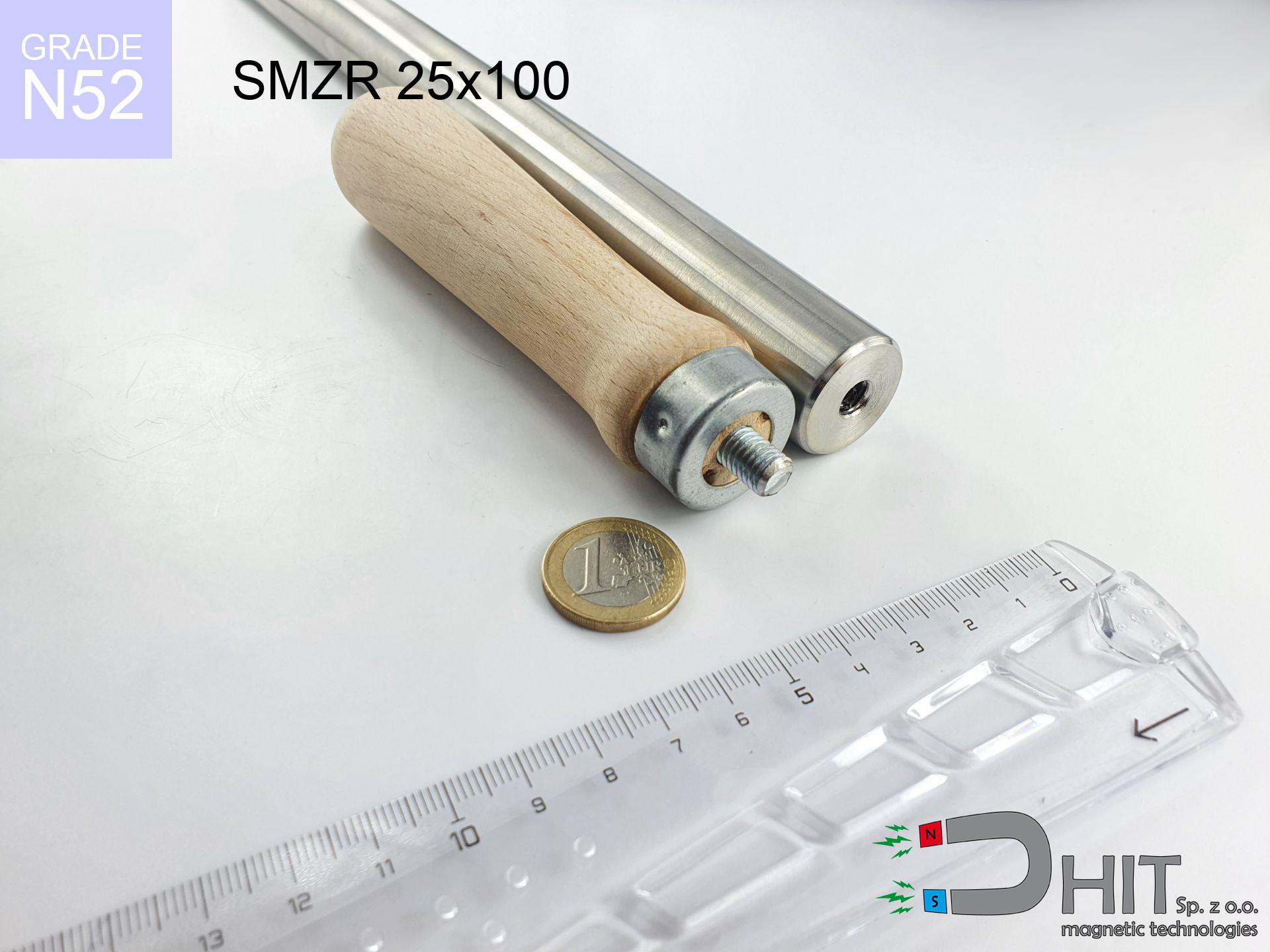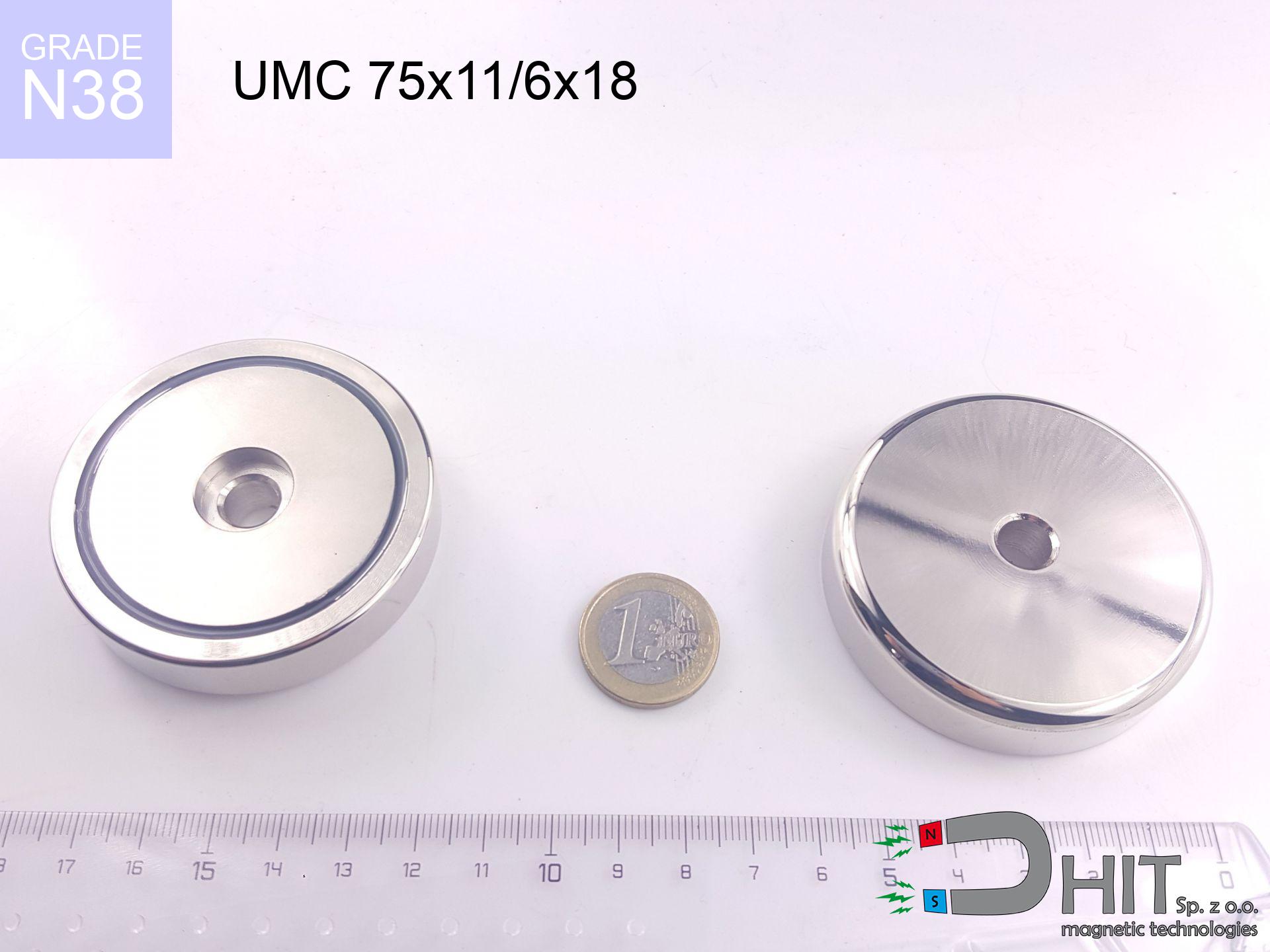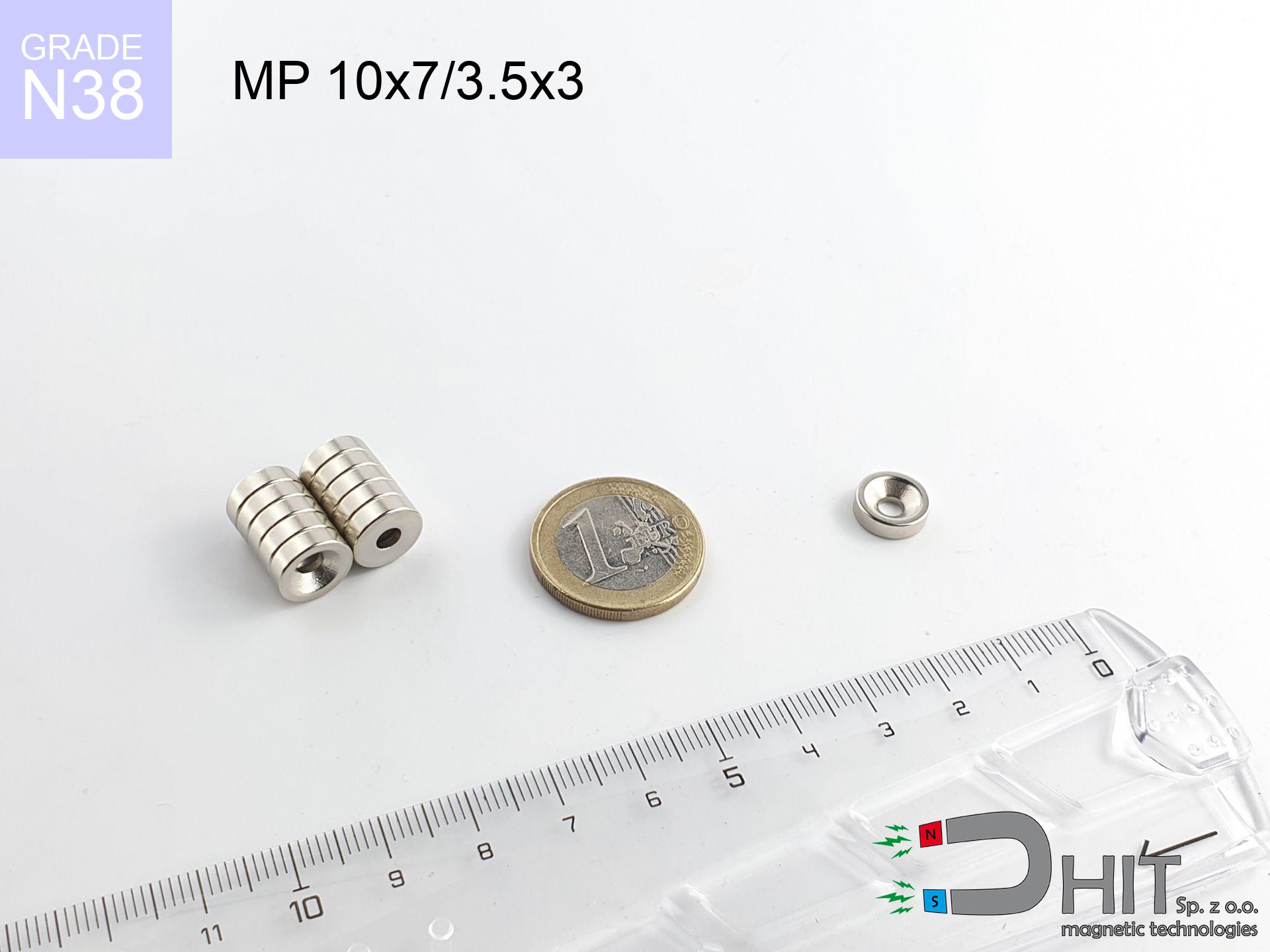SMZR 25x100 / N52 - magnetic separator with handle
magnetic separator with handle
Catalog no 140232
GTIN/EAN: 5906301813408
Diameter Ø
25 mm [±1 mm]
Height
100 mm [±1 mm]
Weight
0.01 g
Magnetic Flux
~ 9 500 Gauss [±5%]
307.50 ZŁ with VAT / pcs + price for transport
250.00 ZŁ net + 23% VAT / pcs
bulk discounts:
Need more?
Give us a call
+48 22 499 98 98
otherwise send us a note by means of
request form
through our site.
Lifting power and structure of magnets can be reviewed using our
magnetic calculator.
Same-day processing for orders placed before 14:00.
Physical properties SMZR 25x100 / N52 - magnetic separator with handle
Specification / characteristics - SMZR 25x100 / N52 - magnetic separator with handle
| properties | values |
|---|---|
| Cat. no. | 140232 |
| GTIN/EAN | 5906301813408 |
| Production/Distribution | Dhit sp. z o.o. |
| Country of origin | Poland / China / Germany |
| Customs code | 85059029 |
| Diameter Ø | 25 mm [±1 mm] |
| Height | 100 mm [±1 mm] |
| Weight | 0.01 g |
| Material Type | Stainless steel AISI 304 / A2 |
| Magnetic Flux | ~ 9 500 Gauss [±5%] |
| Size/Mount Quantity | 2xM8 |
| Polarity | circumferential - 3 poles |
| Casing Tube Thickness | 1 mm |
| Manufacturing Tolerance | ±1 mm |
Magnetic properties of material N52
| properties | values | units |
|---|---|---|
| remenance Br [min. - max.] ? | 14.2-14.7 | kGs |
| remenance Br [min. - max.] ? | 1420-1470 | mT |
| coercivity bHc ? | 10.8-12.5 | kOe |
| coercivity bHc ? | 860-995 | kA/m |
| actual internal force iHc | ≥ 12 | kOe |
| actual internal force iHc | ≥ 955 | kA/m |
| energy density [min. - max.] ? | 48-53 | BH max MGOe |
| energy density [min. - max.] ? | 380-422 | BH max KJ/m |
| max. temperature ? | ≤ 80 | °C |
Physical properties of sintered neodymium magnets Nd2Fe14B at 20°C
| properties | values | units |
|---|---|---|
| Vickers hardness | ≥550 | Hv |
| Density | ≥7.4 | g/cm3 |
| Curie Temperature TC | 312 - 380 | °C |
| Curie Temperature TF | 593 - 716 | °F |
| Specific resistance | 150 | μΩ⋅cm |
| Bending strength | 250 | MPa |
| Compressive strength | 1000~1100 | MPa |
| Thermal expansion parallel (∥) to orientation (M) | (3-4) x 10-6 | °C-1 |
| Thermal expansion perpendicular (⊥) to orientation (M) | -(1-3) x 10-6 | °C-1 |
| Young's modulus | 1.7 x 104 | kg/mm² |
Elemental analysis
| iron (Fe) | 64% – 68% |
| neodymium (Nd) | 29% – 32% |
| boron (B) | 1.1% – 1.2% |
| dysprosium (Dy) | 0.5% – 2.0% |
| coating (Ni-Cu-Ni) | < 0.05% |
Ecology and recycling (GPSR)
| recyclability (EoL) | 100% |
| recycled raw materials | ~10% (pre-cons) |
| carbon footprint | low / zredukowany |
| waste code (EWC) | 16 02 16 |
View more offers
Strengths and weaknesses of neodymium magnets.
Pros
- They retain magnetic properties for around ten years – the loss is just ~1% (according to analyses),
- They have excellent resistance to weakening of magnetic properties as a result of external magnetic sources,
- The use of an metallic layer of noble metals (nickel, gold, silver) causes the element to look better,
- Magnetic induction on the working layer of the magnet remains strong,
- Due to their durability and thermal resistance, neodymium magnets can operate (depending on the shape) even at high temperatures reaching 230°C or more...
- Thanks to versatility in designing and the ability to customize to unusual requirements,
- Key role in future technologies – they are utilized in mass storage devices, brushless drives, medical devices, also complex engineering applications.
- Compactness – despite small sizes they offer powerful magnetic field, making them ideal for precision applications
Cons
- To avoid cracks upon strong impacts, we suggest using special steel housings. Such a solution protects the magnet and simultaneously increases its durability.
- We warn that neodymium magnets can lose their strength at high temperatures. To prevent this, we advise our specialized [AH] magnets, which work effectively even at 230°C.
- When exposed to humidity, magnets start to rust. To use them in conditions outside, it is recommended to use protective magnets, such as those in rubber or plastics, which secure oxidation and corrosion.
- Due to limitations in producing threads and complicated forms in magnets, we propose using casing - magnetic mechanism.
- Health risk resulting from small fragments of magnets can be dangerous, in case of ingestion, which is particularly important in the context of child safety. Furthermore, tiny parts of these devices can disrupt the diagnostic process medical when they are in the body.
- Due to complex production process, their price is higher than average,
Pull force analysis
Highest magnetic holding force – what affects it?
- using a base made of low-carbon steel, acting as a magnetic yoke
- possessing a massiveness of minimum 10 mm to ensure full flux closure
- with an polished contact surface
- with direct contact (without paint)
- under perpendicular application of breakaway force (90-degree angle)
- at room temperature
Lifting capacity in real conditions – factors
- Air gap (between the magnet and the plate), since even a tiny distance (e.g. 0.5 mm) leads to a drastic drop in force by up to 50% (this also applies to varnish, corrosion or debris).
- Loading method – catalog parameter refers to detachment vertically. When applying parallel force, the magnet exhibits significantly lower power (typically approx. 20-30% of maximum force).
- Metal thickness – the thinner the sheet, the weaker the hold. Part of the magnetic field passes through the material instead of converting into lifting capacity.
- Plate material – mild steel gives the best results. Alloy steels lower magnetic permeability and holding force.
- Surface quality – the smoother and more polished the plate, the better the adhesion and higher the lifting capacity. Roughness acts like micro-gaps.
- Thermal factor – hot environment weakens magnetic field. Too high temperature can permanently damage the magnet.
Lifting capacity testing was carried out on a smooth plate of optimal thickness, under a perpendicular pulling force, however under parallel forces the load capacity is reduced by as much as 75%. Moreover, even a slight gap between the magnet and the plate reduces the load capacity.
Safe handling of neodymium magnets
Bone fractures
Large magnets can smash fingers in a fraction of a second. Do not put your hand betwixt two attracting surfaces.
Do not underestimate power
Before use, read the rules. Uncontrolled attraction can destroy the magnet or hurt your hand. Be predictive.
Beware of splinters
Watch out for shards. Magnets can explode upon violent connection, launching sharp fragments into the air. Eye protection is mandatory.
Warning for allergy sufferers
Warning for allergy sufferers: The Ni-Cu-Ni coating contains nickel. If redness occurs, cease handling magnets and wear gloves.
Compass and GPS
A strong magnetic field disrupts the operation of magnetometers in phones and navigation systems. Maintain magnets close to a device to avoid damaging the sensors.
Permanent damage
Regular neodymium magnets (N-type) lose magnetization when the temperature surpasses 80°C. Damage is permanent.
Danger to pacemakers
For implant holders: Powerful magnets disrupt medical devices. Keep at least 30 cm distance or ask another person to work with the magnets.
Combustion hazard
Combustion risk: Rare earth powder is explosive. Do not process magnets in home conditions as this may cause fire.
Electronic devices
Powerful magnetic fields can destroy records on payment cards, hard drives, and other magnetic media. Stay away of at least 10 cm.
Adults only
NdFeB magnets are not suitable for play. Accidental ingestion of a few magnets can lead to them pinching intestinal walls, which constitutes a critical condition and necessitates immediate surgery.



![SM 32x225 [2xM8] / N42 - magnetic separator SM 32x225 [2xM8] / N42 - magnetic separator](https://cdn3.dhit.pl/graphics/products/sm-32x225-2xm8-dob.jpg)


![UMGGZ 66x8.5 [M8] GZ / N38 - rubber magnetic holder external thread UMGGZ 66x8.5 [M8] GZ / N38 - rubber magnetic holder external thread](https://cdn3.dhit.pl/graphics/products/umggz-66x8.5-m6-gz-gas.jpg)

